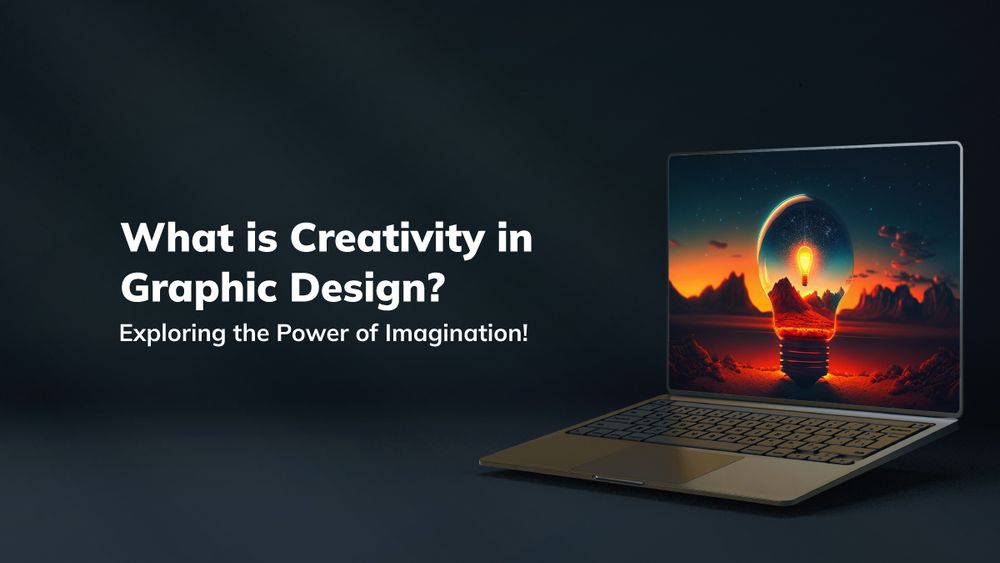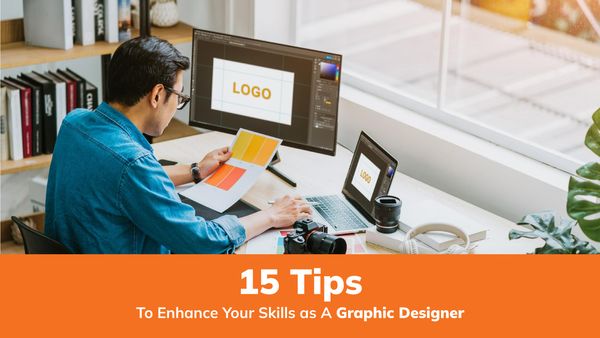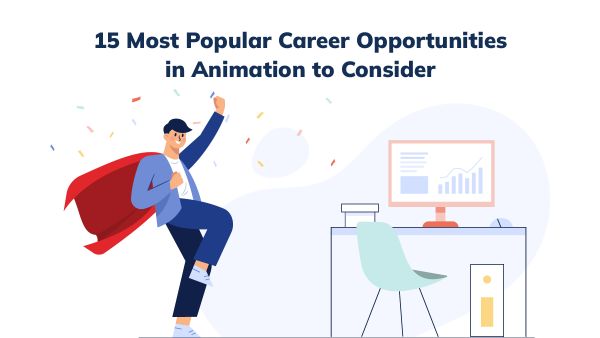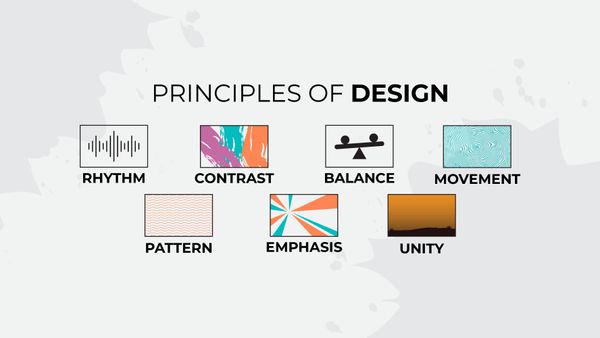What is Creativity in Graphic Design? Exploring the Power of Imagination!
Creativity is the lifeblood of graphic design. The spark ignites innovation, captures attention, and brings visual concepts to life. This blog delves into the essence of creativity and its role in graphic design. We explore how designers harness their imagination to create compelling visuals, communicate messages effectively, and leave a lasting impact on audiences.
What is Creativity?
Creativity is the ability to uniquely generate original and valuable ideas by combining existing knowledge, skills, and experiences. It is the process of thinking beyond conventional boundaries, exploring new possibilities, and finding innovative solutions to design challenges. In graphic design, creativity allows designers to transform concepts into visually captivating and meaningful compositions.
The Creative Process in Graphic Design:
- Gathering Inspiration
Every creative journey begins with inspiration. Graphic designers seek inspiration from various sources, such as nature, art, culture, technology, and everyday experiences. They immerse themselves in research, explore trends, and collect visual references to fuel their creative thinking.
- Defining the Design Brief
Once inspired, designers analyze the design brief, understanding the objectives, target audience, and desired outcomes. This step helps them align their creative ideas with the project's goals, ensuring that the design solution effectively communicates the intended message.
- Ideation and Conceptualization
The ideation stage involves brainstorming and generating many ideas. Designers sketch, write, or create mood boards to visualize and explore concepts. They embrace divergent thinking, allowing ideas to flow freely without judgment and encouraging unusual connections and fresh perspectives.
- Refinement and Selection
Designers evaluate and refine the most promising concepts from the pool of ideas. They consider factors like visual impact, relevance, and feasibility. This stage involves iterations, where designers experiment, test, and refine their designs to balance creativity and practicality.
- Execution and Craftsmanship
With a final concept, designers move into the execution phase. They utilize their technical skills, software proficiency, and artistic abilities to bring their designs to life. Attention to detail, precision, and craftsmanship is vital in delivering a polished and visually stunning final product.
How Creativity Enhances Graphic Design?
- Capturing Attention: Creative graphic design stands out in a visually saturated world. By thinking outside the box, designers create eye-catching visuals that grab the audience's attention and make a lasting impression. Unconventional layouts, unique typography, innovative use of color, and captivating imagery are ways creativity enhances a design's visual impact.
- Problem-Solving: Creativity enables designers to approach design problems from different angles, leading to innovative solutions. They can find effective ways to communicate complex messages, simplify information, or create intuitive user experiences. Through creative problem-solving, designers can transform challenges into opportunities for engaging and meaningful design solutions.
- Emotional Connection: Creative graphic design can evoke emotions and forge connections with the audience. Using the right combination of visual elements, designers can tap into the viewers' emotions, triggering empathy, joy, excitement, or curiosity. This emotional connection enhances the effectiveness of communication and strengthens brand affinity.
- Differentiation and Brand Identity: Creativity helps businesses stand out in crowded markets. Graphic designers utilize their imaginative skills to create unique brand identities, distinct visual styles, and memorable logos. By infusing creativity into branding, companies can differentiate themselves, leave a lasting impression, and establish a strong brand presence.
- Communication and Storytelling: Effective communication is at the core of graphic design, and creativity plays a crucial role in conveying messages. Designers utilize their creative prowess to craft visuals that tell compelling stories, simplify complex information, and communicate ideas in a visually engaging manner. Through creativity, designers can turn mundane content into captivating narratives that resonate with the audience.
Creativity is the driving force behind graphic design. It empowers designers to think imaginatively, solve problems innovatively, and create visually striking compositions. By harnessing the power of creativity, graphic designers can captivate audiences, evoke emotions, communicate effectively, and make a lasting impact. So, embrace your creative spirit and unleash the power of imagination in your graphic design endeavours.
FAQs
Q1: How does creativity work in graphic design?
A: In graphic design, creativity is the driving force behind visually captivating and meaningful designs. It involves using imagination and artistic skills to develop original concepts, select appropriate visual elements, and effectively communicate messages. Creativity allows designers to think outside the box, solve design problems innovatively, and connect with audiences on an emotional level.
Q2: Why is creativity important in graphic design?
A: Creativity is essential in graphic design for several reasons. Firstly, it helps designers differentiate their work, making it stand out in a crowded marketplace. Creative designs grab attention, evoke emotions, and leave a lasting impact on viewers. Secondly, creativity enables designers to solve design challenges effectively, finding innovative ways to communicate complex information or create intuitive user experiences. Finally, creativity enhances communication by telling compelling stories and conveying visually engaging and memorable messages.
Q3: How can graphic designers unleash their creativity?
A: Graphic designers can unleash their creativity by exploring various sources of inspiration, such as nature, art, culture, and technology. They can research, experiment with different design techniques, and seek feedback from peers or clients. Embracing a mindset of curiosity, open-mindedness, and continuous learning allows designers to push the boundaries of their creativity and develop their unique style.
Q4: How does creativity contribute to effective graphic design?
A: Creativity is crucial in effective graphic design by capturing attention, evoking emotions, and enhancing communication. Creative designs have the power to engage viewers, communicate messages effectively, and leave a lasting impression. By utilizing their creative thinking skills, designers can develop visual solutions that resonate with audiences, promote brand identity, and create meaningful connections between brands and consumers.
Q5: Can creativity be learned or improved in graphic design?
A: Absolutely! While some individuals may naturally possess a higher inclination towards creativity, it is a skill that can be learned and improved over time. Graphic designers do learn graphic design online that can nurture and develop their creative abilities by actively engaging in creative exercises, exploring new design techniques, seeking inspiration, and being open to new ideas.
Q6: How does collaboration contribute to creativity in graphic design?
A: Collaboration plays a vital role in enhancing creativity in graphic design. By working with others, designers can benefit from diverse perspectives, exchange ideas, and challenge their thinking. Collaborative environments foster creativity through brainstorming sessions, constructive feedback, and collective problem-solving, leading to innovative design solutions.




